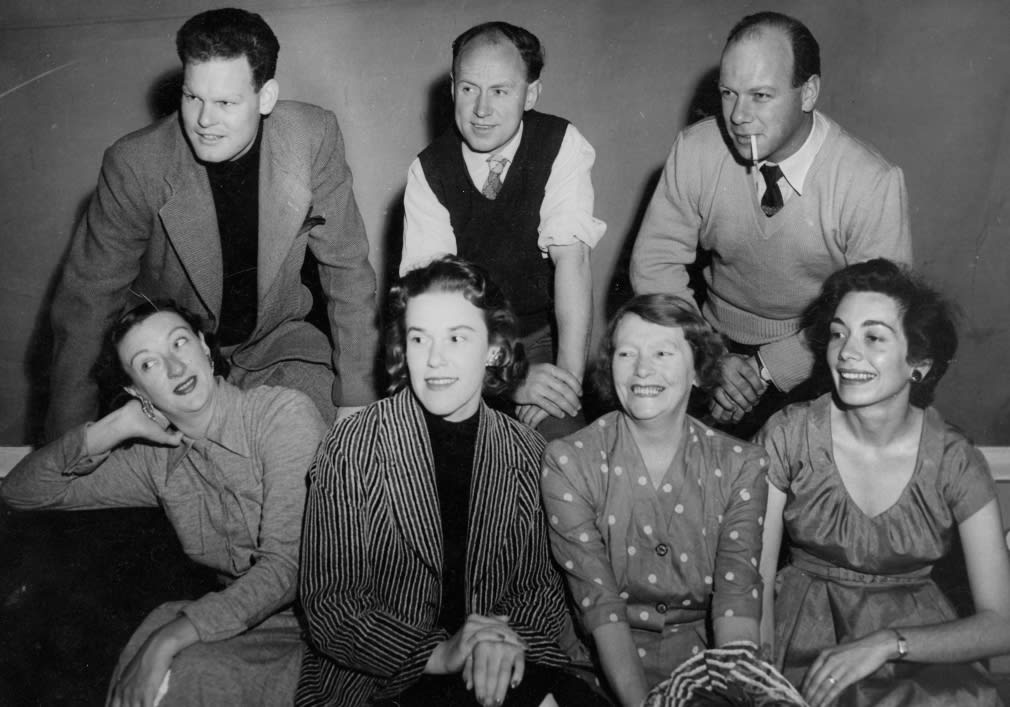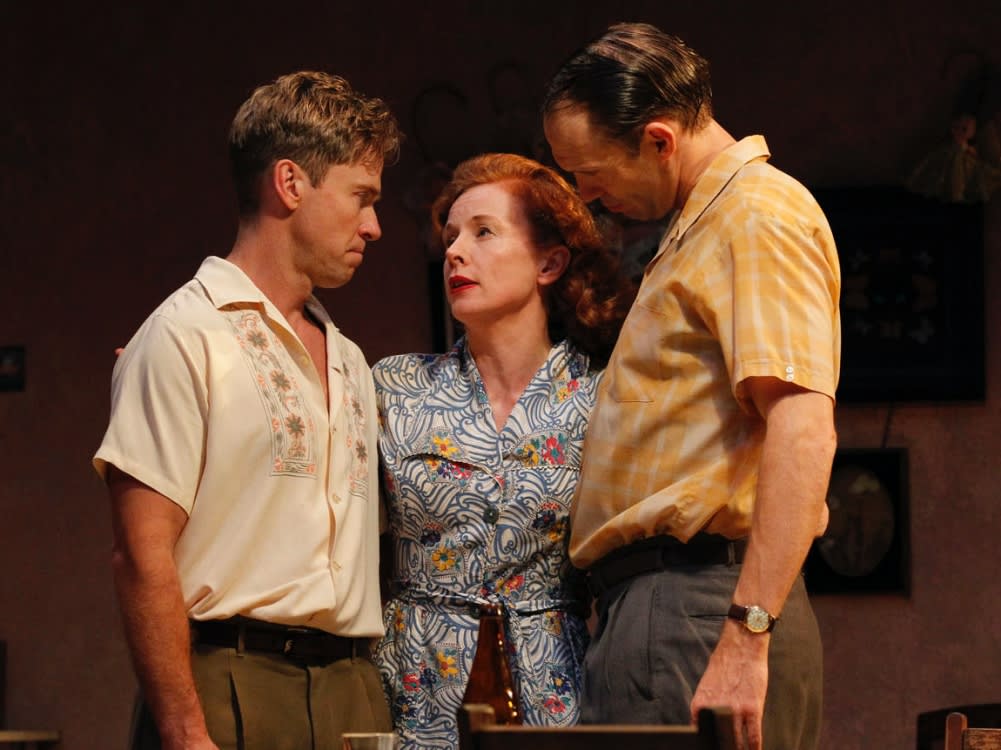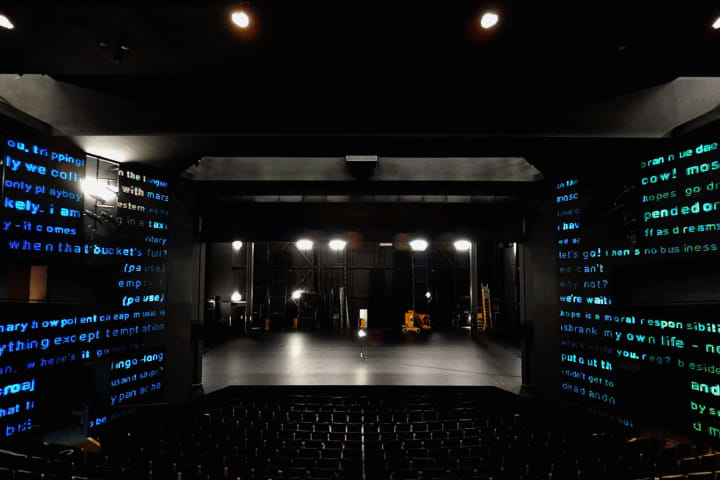When John Sumner first arrived in Australia in 1952, the local theatre scene was still very much in its infancy. The only theatre companies were amateur, there was no official training for actors or theatrical careers of any kind, and seemingly little in the way of audience appetite for local stories.
But Sumner didn’t let any of this stand in his way. The British-born stage manager, trained at Scotland’s Dundee Repertory Theatre and on West End, had moved halfway around the world to take up a leadership position with the University of Melbourne’s Union Theatre, but he had bigger dreams than just running a students’ venue. By 1953 he had convinced the university to support his plans to establish the Union Theatre Repertory Company (UTRC): the nation’s first professional theatre company.
It Won’t Last a Week
Serving as the new company’s founding Artistic Director and occasional designer, Sumner overcame the local scene’s widespread doubts – It Won’t Last a Week, the title of a book about MTC’s beginnings, showcases the contemporary consensus – as he oversaw the company’s initial two years, during which time he directed the world premiere season of Ray Lawler’s Summer of the Seventeenth Doll, the play widely acknowledged as a ‘turning point’[1] in Australian theatre history.

Summer of the Seventeenth Doll, 1955. Photo: MTC archives
Lawler was by that point serving as UTRC’s sophomore Artistic Director, with Sumner heading up to Sydney for a position with the Australian Elizabethan Theatre Trust. His absence was short-lived, however, and he returned in 1959 to once again lead the Company. He spent the next two and a half decades at its helm, directing over 100 plays, and spearheading the development of a professional and internationally acclaimed Australian theatre culture.
Between 1959 and 1987, Sumner oversaw the company’s expansion, into the Russell Street Theatre and then the newly built Arts Centre Melbourne’s Playhouse, and championed the development of many of the country’s leading theatrical lights – including David Williamson, Nick Enright, Zoe Caldwell, Noel Ferrier, Barry Humphries, Frank Thring and George Ogilvie. His influence has led to him being called ‘the father of Australian drama’[2].
The most famous Australian play ever written
Of course, no story of Australian drama would be complete without Ray Lawler. Born in 1921, a few years before and continents away from Sumner, Lawler grew up in a working class Footscray family. After leaving school at the age of 13 to earn money for the family, the theatre-obsessed Lawler continued his education with evening acting classes, courtesy of a ‘third generation professional actress who took students as a sideline’[3]. He began writing plays when he was 19, but it was his 10th – the above-mentioned Summer of the Seventeenth Doll – that changed everything.
Written by hand during stints in the reading room at the Melbourne Public Library (as the State Library Victoria was known at the time), this seminal play is now widely recognised as being the first to authentically and naturalistically portray Australian life, language and characters. It won Lawler first prize in the Playwrights’ Advisory Board Competition (alongside joint winner Oriel Gray’s The Torrents), which guaranteed its publication and production. Lawler himself played the lead role of Barney Ibbot in the play’s premiere season under Sumner – he has joked that he wrote the part for himself because there were very few roles for short men’[4] – as well as its Sydney season and its international debut in the UK, where it won the Evening Standard Award for the best new play on the London stage and became Australia’s first overseas theatrical hit.
Called ‘the most famous Australian play ever written’[5] by literary critic Alison Croggon, Summer of the Seventeenth Doll has been adapted into film, and for television (twice), and it earned Lawler comparisons to Tennessee Williams. Following its initial international success, he settled overseas – living variously in Denmark, England and Ireland – before finally returning to Melbourne in 1975. Upon his return he re-joined the UTRC, now known as the Melbourne Theatre Company, this time as literary advisor. In this capacity he worked alongside Sumner once again and wrote two Doll follow-ups: Kid Stakes and Other Times. The Doll Trilogy, as it came to be known, premiered in 1977 at MTC’s then home at Russell Street Theatre.
Lawler believes that Summer of the Seventeenth Doll created more than just a lasting bond between himself and Sumner; it sparked in the Englishman a lifelong ‘interest in theatre with an Aussie accent’[6]. Together, John Sumner and Ray Lawler wrote the beginnings of the MTC story, as well as spearheading the development and growth of Australian theatre and drama locally, nationally and internationally.

Summer of the Seventeenth Doll, 2012. Photo: Jeff Busby
[1] Peter Fitzpatrick, After The doll: Australian drama since 1955
[2] ‘Stage set for history’, The Age: 28 November 2003; access 12 May 2020
[3] Ray Lawler, ‘The little theatre company that could’, The Age: 30 August 2013; accessed 12 May 2020
[4] Ramona Koval, Australian Literature 101: Ray Lawler – Summer of the Seventeenth Doll, The Wheeler Centre: 5 April, 2012; recording accessed 12 May 2020
[5] ibid
[6] Lawler, op cit
Published on 23 May 2020





